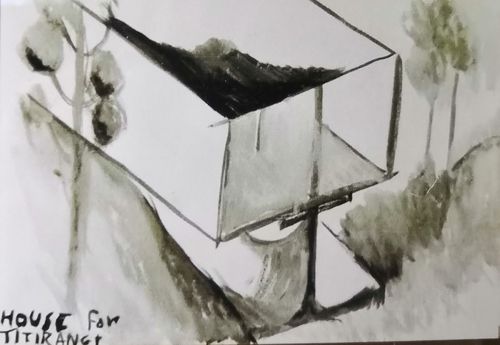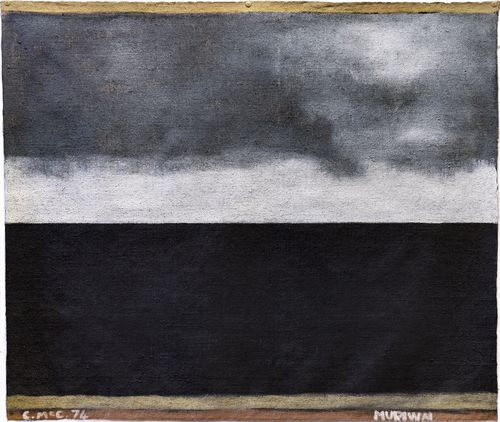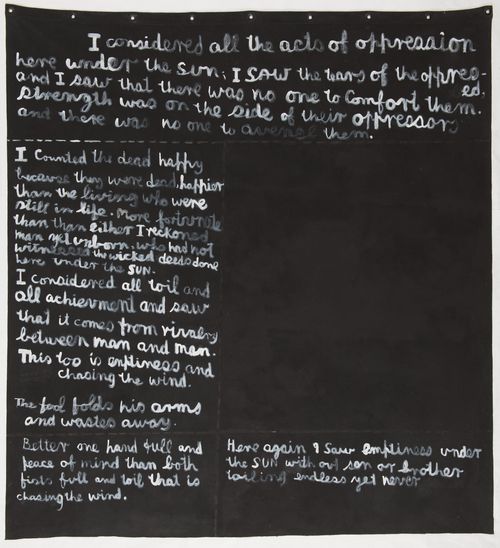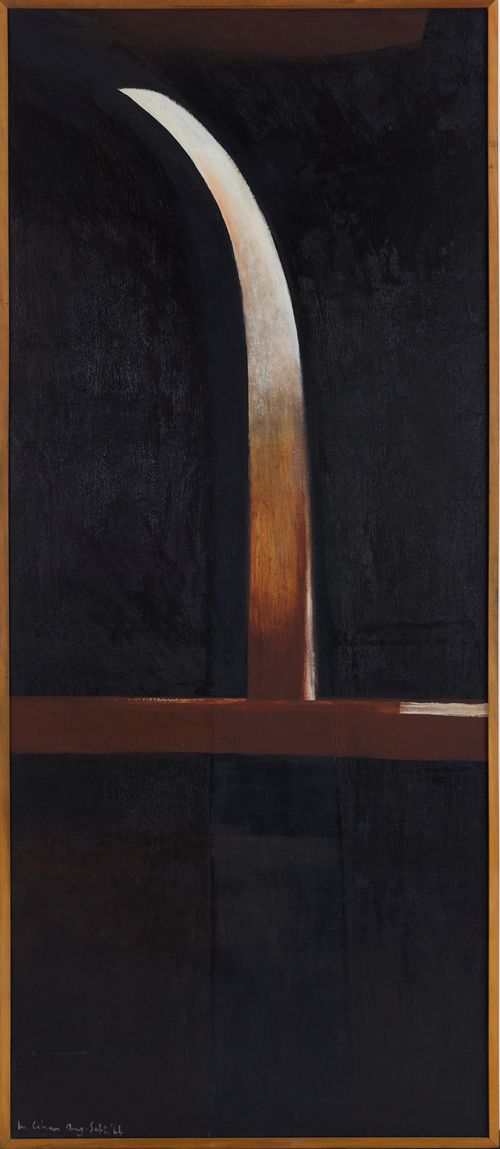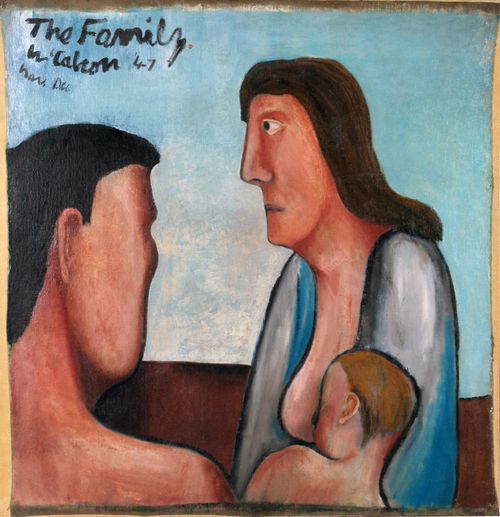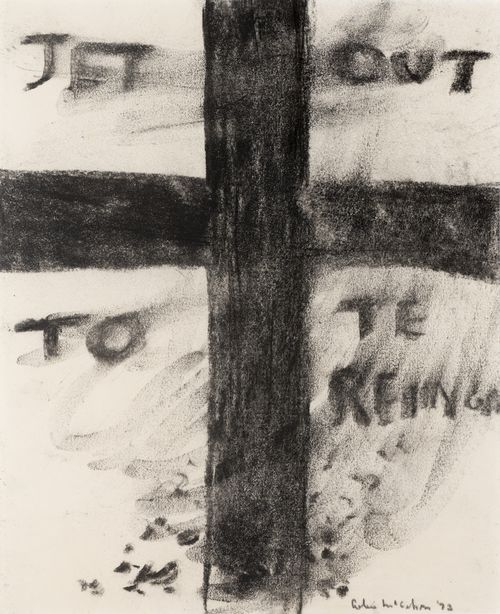As there is a constant flow of light we are born into the pure land

Colin McCahon, As there is a constant flow of light we are born into the pure land, 1965, enamel on hardboard, 598 x 1800mm. Collection of Christchurch Art Gallery Te Puna o Waiwhetu. Courtesy McCahon Research and Publication Trust.

Wairarapa Plains, 2019. Image courtesy of Stephen Wainwright
Stephen Wainwright
I have regularly admired this work on visits to the Christchurch Art Gallery Te Puna O Waiwhetū. It draws me in every time.
This work resonates with me for a few reasons.
In particular because of the literal truth of the statement for us here in New Zealand and the ambiguity of the word a ‘pure land.’
Artists notice light and they notice context. McCahon was drawn again and again to the ‘golden hour’ colours of Aotearoa. The combination of the text, the composition of the work and the palette proclaim ‘McCahon’ for me.
This work was purchased for the public in 1982 with the assistance of the Queen Elizabeth II Arts Council, an earlier iteration of the Arts Council, which is a nice legacy to note.
My ancestors chose to settle here, initially in Petone in 1860, our whakapapa goes back to Ireland, the Northmen and England but here is home.
McCahon's obsession with our landscape is one with which I absolutely relate. For my own enjoyment I like to document this. The golden hours, shadows and light amplify the images. Also, there is some ancient draw to awakening and seeing the sun rise or set.
McCahon, back in 1965, was interested in Buddhist ideals and light as a metaphor for faith and enlightenment.
This photo I took is of the Wairarapa plains, early, before the sun burns the cloud off. I would have sent it to a few people and whānau who would have appreciated the photo, and what it represents—a visceral love of the land that many of us share. This photo gives a perspective that will perhaps be new to many people and therefore hopefully stimulating. Both the elevation looking across to the distant Tararua Ranges and the agricultural plains being hidden by the low cloud provide visual interest.
Sometimes our land offers us images that appear in broadly equal measure both abstract and representational. My eyes are delighted by images such as this one I captured on my trusty phone camera. More than this though the picture and palette are affirming. Our awa (hidden here), whenua, mountains and sky mark where we stand tall, as Colin well knew.
At some point I plan to pull my best images together in some way, although to be fair that is more a vague intention rather than an actual plan. Photography has always been an interest. When I was at college photography was ‘old school’. I spent a fair bit of time in the darkroom with those magical chemicals. Every frame from a film roll of 24 or 36 negatives required careful consideration before taking ‘the shot’, a caution born of scarcity. In the digital realm we have unlimited abundance, it is quite a different mindset.
In Aotearoa, as Crowded House said, we can experience up to four seasons in one day, and sometimes several seasons several times. This gives the citizen, viewer and or photographer welcome visual variety. Moreover, we can often see a long way, at least in the countryside and so we get to see widely in landscape format. Certainly, relative to many places I have visited around the world, here we can see purely, unhindered by smog or haze.
In my working life at Creative New Zealand I am fortunate to see the multitude of ways artists respond to our natural environment. For instance Bill Hammond’s practice was transformed by his visit to the Auckland Islands in 1991. In particular the impact of these islands—a land with birds but without people—contributed to his subsequent and iconic bird-people theme. The popularity of the residency opportunities we provide with the Department of Conservation are testament to the attractions of the natural environment for practitioners.
